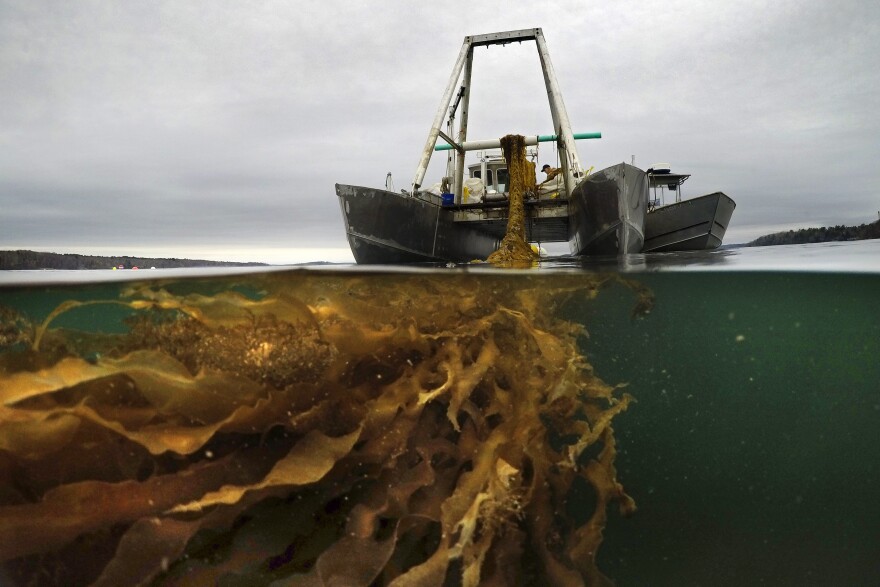Like any other food, harvested seaweed can have some levels of pathogenic bacteria. But unlike other foods pulled from the ocean, there is little federal guidance on how to reduce food safety risks for seaweed once it’s out of the water.
That’s because the long blades of kelp that sea farmers grow off the rocky coast of Maine don’t fall neatly into any single category when it comes to food safety. In fact, in the eyes of the U.S. Food and Drug Administration, seaweed isn’t really a food at all.
Neither seafood nor vegetable, seaweed is regulated by the FDA as a spice because of its historic use as a dried product eaten in small quantities.
But that doesn’t reflect the evolution of seaweed in Maine, where kelp and other species are now commonly used in a plethora of culinary applications, including noodles, salads and kimchi.
With this lack of counsel at a higher level, a team of Maine researchers is working to provide local harvesters with new data on how to safely handle seaweed following recent food safety tests on the aquatic plants.
For the past two years, scientists at the University of New England have been studying how different storage and drying methods cut down on pathogens. They hope their findings can help develop proper regulations that will protect eaters without overburdening the growing industry.
Professors Carrie Byron and Kristin Burkholder, along with graduate student Jessica Vorse, loaded up rockweed and kelp with common pathogens to levels much higher than found naturally. Then they tested the seaweed after air drying, freeze drying and varying storage temperatures.
The team found that there was a sharp decline in the pathogens in both drying methods and that colder storage temperatures resulted in less microbiotic activity.
While none of that is shocking or unexpected, it gives the FDA and the Maine seaweed industry some hard data to make informed decisions about how to handle seaweed as a food.
The lack of tailored regulations hasn’t been an issue with the small number of harvesters and processors in Maine yet. But while there have been no reported cases of illness connected to seaweed in Maine, researchers worry that as the industry grows, the chances of a food safety issue rise, potentially bringing down reactionary regulations that don’t make sense for the aquatic plants.
“My concern is this industry is growing super fast,” Byron said. “All it takes is one mistake from one actor to burden the whole industry.”
The UNE work is some of the first looking into food safety practices for seaweed.
“We’re not doing this work because there is an inherent risk of contamination with seaweed products,” Burkholder said. “Seaweed is safe, and we’re doing this work to keep it safe.”
Creating well-fitting and overarching regulations for seaweed will be a long, arduous task.
Jennifer Perry, a professor of food microbiology at the University of Maine, has been working with seaweed food safety for years and said there are a number of factors that make it hard to craft comprehensive food safety regulations.
There are several different types of seaweed, all of which will likely respond to different pathogens and handling methods in different ways.
The Maine industry is also still relatively small compared with other food industries. Here, harvesting methods, growing conditions and air-drying processes are all highly personalized to each farmer, making it hard to replicate in any study.
Seaweed in general is also not high on the regulatory priority list for much of the country.
But there are concerns that as the industry grows, officials may take the easy route out and just clump seaweed with shellfish regulations. While they both fit under the big umbrella of aquaculture, they interact with their environment in different ways.
For instance, seaweed isn’t a filter-feeder like oysters. So waters that are considered contaminated for shellfish, may not be harmful to seaweed.
“We really need this data to allow us to make actual data-driven guidelines for the seaweed industry,” Burkholder said. “We wanted to do this because maybe seaweed shouldn’t be treated like shellfish.”
This story appears through a partnership with the Bangor Daily News.


